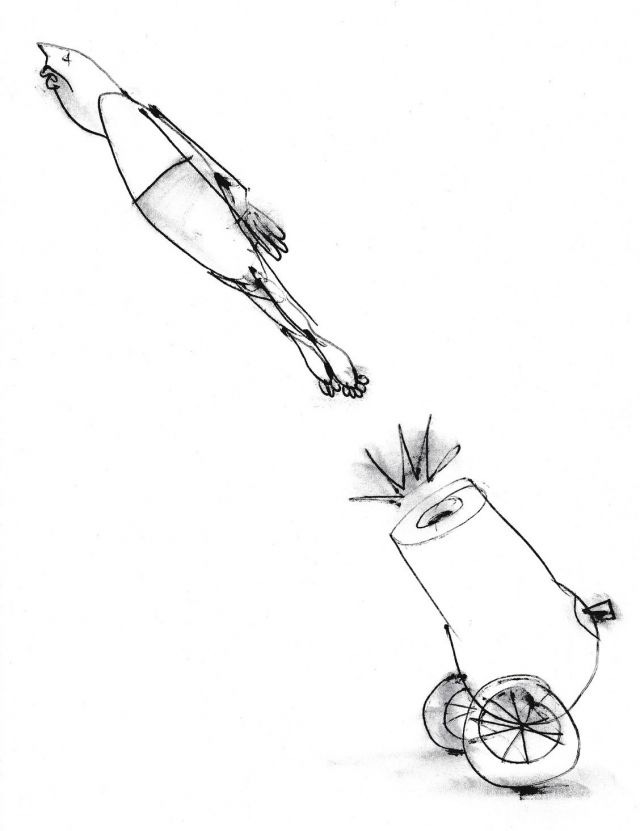The Story Behind the Film
Maddd Science

One element of media that I've found I'm more interested in than most fiction startups is the process by which a story gets turned into a film. Apparently the process isn't lucrative enough to be cost-effective for most social writing networks, with the exception of Wattpad, which seems to be doubling down on the idea.
And it's just as well, perhaps. Movie makers love having a single IP to base their film off of, and offer famously large amounts in compensation. If writers have a clear pipeline to movie deals, they'll be incentivized to write in a more franchise-friendly style: High concept, third-act structure, serialization, and visual storytelling rather than getting inside character's heads.
Anyway, if you want to try your hand at optioning a film from an article you've written, you'll need to read the classics first. Here's a Metafilter post listing a collection of "based on a true story" films' true stories. Argo, the Bling Ring, the Fast and the Furious, ect.
Now here's the potential downside:
The Novelist’s Complicity
Zia Haider Rahman, The New York Review of Books
Much so-called literary fiction is evidently written with an eye to an option for film or TV adaptation. The response to the challenges from television and other media has been to become more like the offerings of those media. In some ways, this is understandable behavior on the part of each novelist. For all but a tiny few, it’s nearly impossible to make anything even approaching a living from writing literary fiction. But the effect of this in aggregate is to leave much of modern fiction looking like an inferior version of TV.
The Shape of Space
Fred Scharmen, Places Journal
Buckminster Fuller had an unusual way of talking about stairs. Instead of downstairs and upstairs, he encouraged people to say instairs and outstairs. “They all laugh about it,” he wrote, “But if they try saying in and out for a few days in fun, they find themselves beginning to realize that they are indeed going inward and outward in respect to the center of Earth, which is our Spaceship Earth. And for the first time they begin to feel real reality.” 3 Writing in 1970, at the dawn of extra-planetary space travel, Fuller identified a break in humans’ spatial perception. Standing on Earth, we see the ground plane as flat, but we know the planet is a sphere. To describe motion and existence in a vast universe, where planetary surfaces are the exception, we would need a new language.
In other news, the next mad scientist I write will use the terms "instairs" and "outstairs," but will refuse to explain why.
Here's a history of the coolest sci-fi expo ever, Japan's Expo '70:
The 1970 Osaka Expo And/As Science Fiction
William O. Gardner, Review Of Japanese Culture And Society
Despite the conspicuous role of Japanese SF talent in Expo '70, it bears mentioning that, as a commercial publishing genre and fan culture, science fiction was still relatively young in Japan in 1970, and had just entered into what some consider its "golden age." Although we can cite numerous examples of science fiction or speculative fiction works from the Meiji period onwards, and especially during the first flowering of Japanese popular fiction amid the publishing boom of the late 1920s and 1930s, it was not until the 1960s that science fiction was firmly established as a genre, following the founding of the first SF coterie magazine Uchujin (Space Dust) in 1957, as well as the commercial SF Magajin by Hayakawa Publishing in 1959, which was initially dominated by translations of foreign works but increasingly also featured domestic authors. Japanese SF came of age in the shadow of translated science fiction and the American -Soviet space race, just as the Apollo moon rock in the American Pavilion, as well as the cosmonautics display in the Soviet Pavilion, generated the greatest lines of visitors at Expo '70.
How Tor.com went from website to publisher of sci-fi’s most innovative stories
Andrew Liptak, The Verge
Tor’s creative director Irene Gallo tells The Verge that the original idea for Tor.com came from Fritz Foy, who managed technology initiatives for Tor’s parent company Macmillan. (He’s now Macmillan’s president and publisher.) Foy arrived at a Christmas party in 2007 carting a stack of science fiction and fantasy magazines, and he proposed a new site that would highlight genre novels, publish short fiction, and generally talk about what readers were interested in. “It was really trying to talk to readers really directly,” she explains. “Right from the start, we wanted it to be publisher- and media-neutral,” covering not just written fiction, but also science fiction television and film.
Something I'm listening to: This Synthwave cover of the Wonder Woman theme song
I mean, obviously this is going to be good.
Something I'm reading: The Thrilling Adventures of Lovelace and Babbage, by Sydney Padua
Got to this five years late, but it's just my type of history: A light-hearted, jokey take on some very bizarre historical figures. And some bizarre mathematical figures. No, I won't apologize for that pun. This book wouldn't. It's ostensibly an alternate history comic strip, but the artist loves footnotes that explain the actual history in a lot of depth, and I actually enjoyed them even more.
Next Week on Maddd Science: The McScam Article
My Patreon remains in: existence